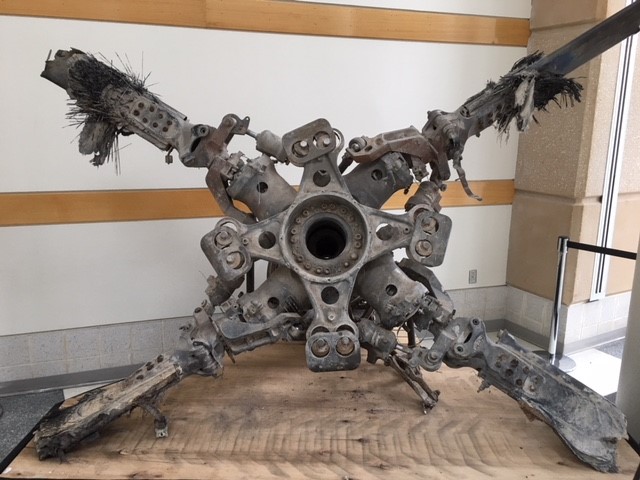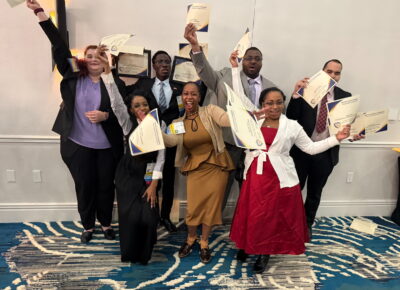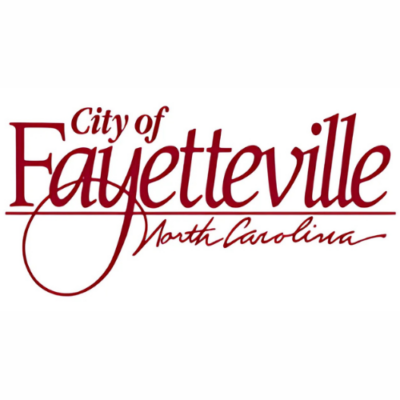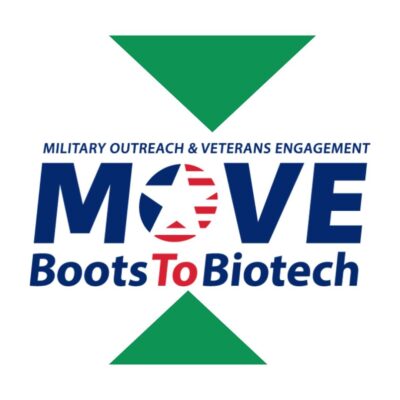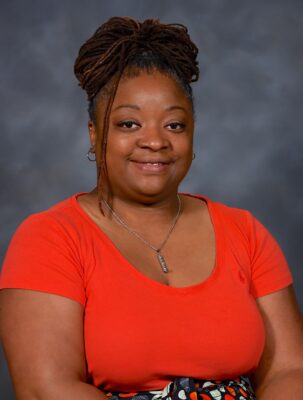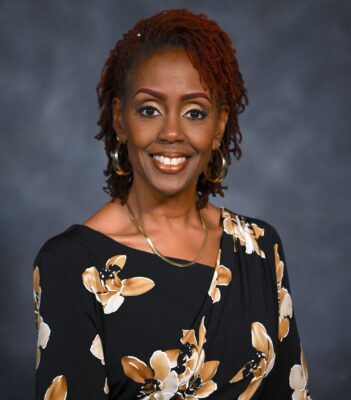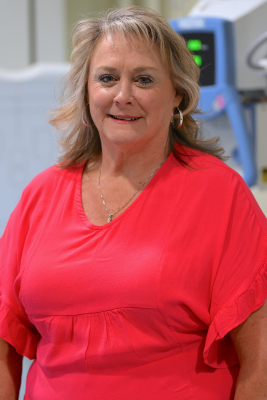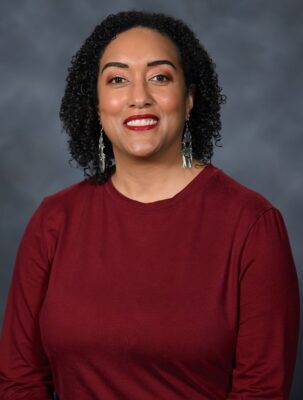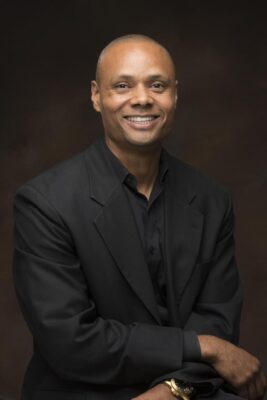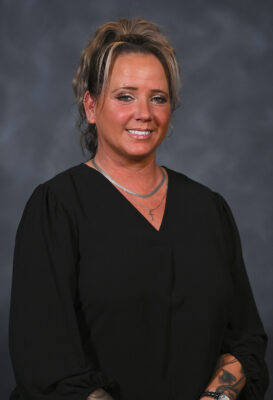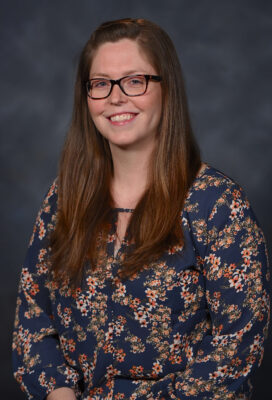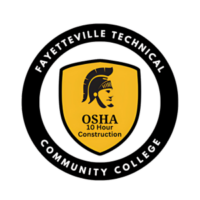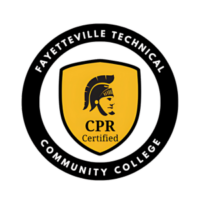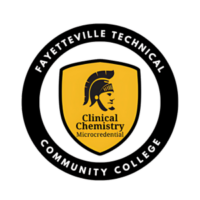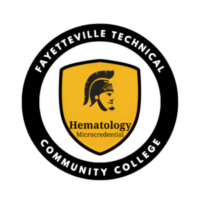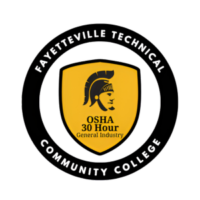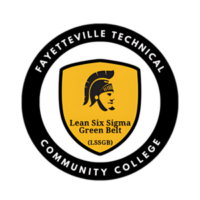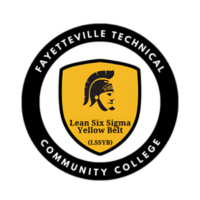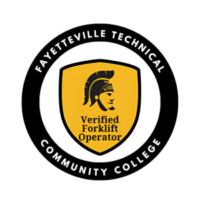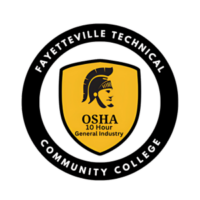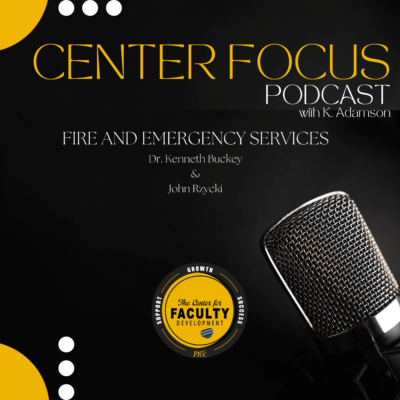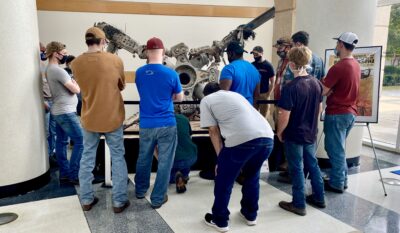
Welding students inspect the damaged rotor from the first Black Hawk helicopter shot down in the Battle of Mogadishu in 1993. The students are creating a permanent steel base for the rotor to sit on inside the ASOM in downtown Fayetteville. [Contributed photo by ASOM]
Welding students at Fayetteville Technical Community College are using their trade skills to honor Special Operations troops who fought in the deadly Battle of Mogadishu in the African country of Somalia in 1993.
As a team, the students will create a base to hold the damaged rotor of a Black Hawk helicopter that crashed during the intense battle, detailed in a book and an Academy Award-winning film, both called “Black Hawk Down.” The rotor currently rests on a deteriorating plywood base inside the U.S. Army Airborne & Special Operations Museum (ASOM) in downtown Fayetteville.
Students from FTCC’s Collision Repair & Refinishing Technology program will paint the base when the fabrication is completed, said program coordinator Robbie Lynch. The project is slated to be finished this month.
“The work we’re doing is very delicate, especially on something of this size, and the major role it had in history,” said U.S Army Sgt. Anthony Morga, one of the students working on the base. “We saw the rotor last week, and it’s intimidating at first. It’s pretty big.”
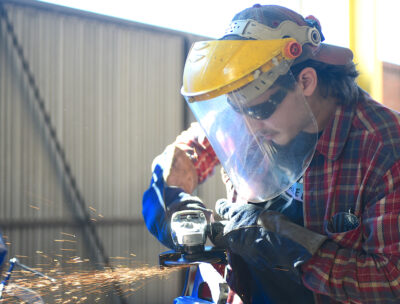
A welding student grinds a piece of steel that will be a base for the damaged rotor from a Black Hawk helicopter that was shot down during the Battle of Mogadishu in 1993. [Photo by Brad Losh]
Known by its call sign “Super 6-1,” the helicopter was shot down by a rocket-propelled grenade during a U.S. military operation in Mogadishu that went badly wrong. Super 6-1 crashed in a neighborhood, killing Army pilots Chief Warrant Officer 4 Clifton Wolcott and Chief Warrant Officer 3 Donovan Briley and injuring other soldiers on board.
Unearthed in 2012, Super 6-1’s rotor has been on display at ASOM since 2013.
For display purposes, the rotor has rested on a plywood base but that base has deteriorated over the years. A new base was needed. For help, ASOM Executive Director Renee Lane turned to FTCC, with its many instructional programs for military members, veterans and military families.
“Having active-duty service members work on this project is pretty amazing since it is something that will be a part of the museum for years to come,” Lane said. “This is a really big deal.”
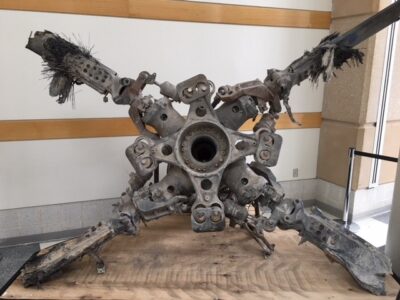
A close up view of the rotor from a Black Hawk helicopter that was in the Battle of Mogadishu in 1993. The rotor is now part of an exhibit inside the ASOM in downtown Fayetteville. [Contributed photo by ASOM]
Fourteen of the FTCC students involved in the project are enrolled in Structural/Pipe Welding through Transition Tech, a skills-training program for military service members preparing to transition to civilian life. Two civilian students who are also taking the welding course are participating.
The new base will consist of mild carbon steel and four-by-four inch tubing, and will measure around 52 inches wide and 108 inches long. Welding Instructor Matthew Clark will oversee the students’ work. He served in the Army for 15 years and worked as a welder for the military branch.
“We chose the material because it’s really strong,” Clark said. “This is a complete custom job because the rotor has been changed from the heat when it was blown up and from being melted.”
He added, “I thought this was a great idea, it’s perfect. Why not have soldiers who are earning a trade build a project for the museum? The students are really excited about this.”
The battle, 23 years ago
The battle was a pivotal point in U.S. involvement in Somalia at that time. American troops had been in Somalia for months as part of a United Nations humanitarian mission, which was continually disrupted by warring local factions. The raid involving Super 6-1 had been aimed at capturing two lieutenants of a key warlord and had been intended to last no more than an hour. Instead, enemy fire shot down two Black Hawks – first Super 6-1, then Super 6-4. A battle between trapped U.S. forces and Somalis lasted nearly 15 hours.
At the battle’s end, 18 American soldiers, one Pakistani soldier and one Malaysian soldier from UN forces were dead while the wounded included 73 American soldiers, seven Malaysians and two Pakistanis. Hundreds of Somalis were killed and wounded, according to the ASOM’s exhibit on the conflict. The United States scaled down its involvement in Somalia and U.S. military forces exited the country six months later.
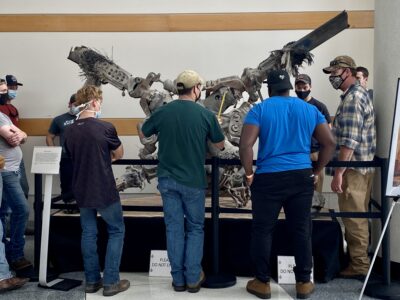
Welding students inspect the damaged rotor from a Black Hawk helicopter and the wooden base it sits on for their project: creating a stable new base for the rotor. [Contributed by ASOM]
Clark can relate to the soldiers who survived and died in the battle. He deployed overseas four times; three tours were in Iraq.
“As a combat veteran myself, I understand the position they were in,” Clark said. “When I think about that conflict, I know they spent a tremendous amount of hours under constant enemy fire. I’ve been in that situation. It’s pretty rough, but our Special Operations showed very well what their capabilities are when outnumbered compared to the enemy side.”
Connecting to the past
Morga learned more about the Battle of Mogadishu after watching the film “Black Hawk Down” when he joined the Army five years ago. The native of San Bernadino, California, was born on Oct. 23 in 1993 – 20 days after the first day of the battle.
“I joined the Army because I had been wanting to serve since I was 18 years old,” he said. “I wanted to be a part of something bigger than myself, serve my country and make the best out of life.”
Morga played an instrumental role in the Super 6-1 rotor project at the College. When Clark told students about the planned project to construct the base, Morga asked his chief if his unit could donate the materials. He serves with B Company, 407th Brigade Support Battalion, 2nd Brigade Combat Team, 82ndAirborne Division. Morga will transition out of the Army in 2021. Prior to Transition Tech, he graduated from FTCC in 2019 with an associate degree in general education.
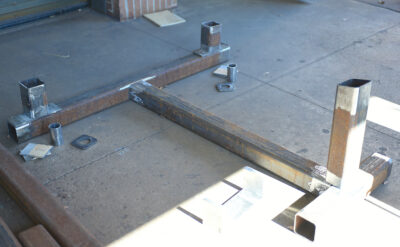
Pictured is part of what will be a new exhibit base for a damaged rotor from a Black Hawk shot down in 1993. The rotor is displayed inside the ASOM. [Photo by Brad Losh]
“It’s a great honor to show the world what an Army welder is capable of,” he said. “When the project first arose, I was excited about it. Everyone in the class is excited to get their hands on our first major welding project.”
Work on the new base began Oct. 29 at FTCC’s Spring Lake campus. Clark will be the facilitator while his students take a hands-on role. They’ll create a blueprint for the base, begin the cutting process of materials and measure the parts before welding.
“I picked up welding because I have a background in machines; I love building things from scratch,” Morga said. “I’d like to pursue a welding career and maybe even become a welding instructor.”
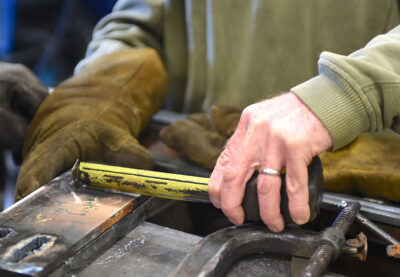
A close-up shot of work being done on a base that will hold the damaged rotor from an Army Black Hawk helicopter inside the ASOM. [Photo by Brad Losh]
Clark explained why the project is more than just a learning opportunity for his students in the trade they’re seeking a career in.
“I think it’s great the museum stayed within the community for this and asked FTCC the right questions so it lined up this way,” he said. “We need welders in this country. The welding trade is very, very hard work, working in the elements from hot temperatures to the cold. Being able to provide the students with this opportunity is great for them.”
Wherever the welding students go from here, there will always be a piece of them in Fayetteville alongside the service members who lived and died valiantly in the Battle of Mogadishu.
Read the second story titled ‘Something bigger than us’ in this series here.
Read more about FTCC’s Transition Tech Program here, and our Collision Repair & Refinishing Technology Program here.
Learn more about the U.S. Army Airborne & Special Operations Museum’s exhibits here.

